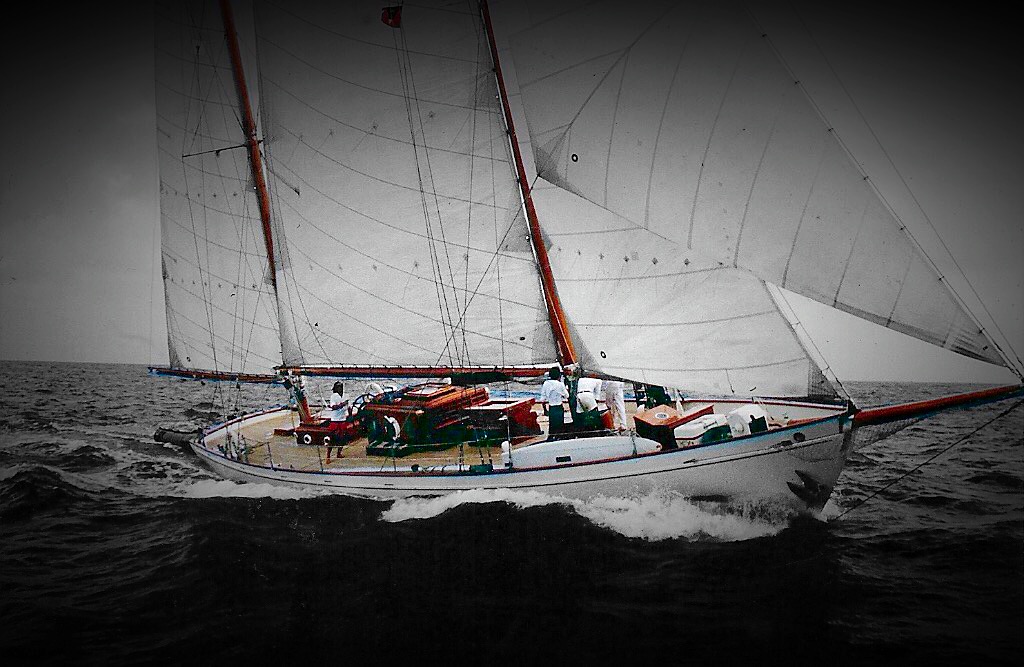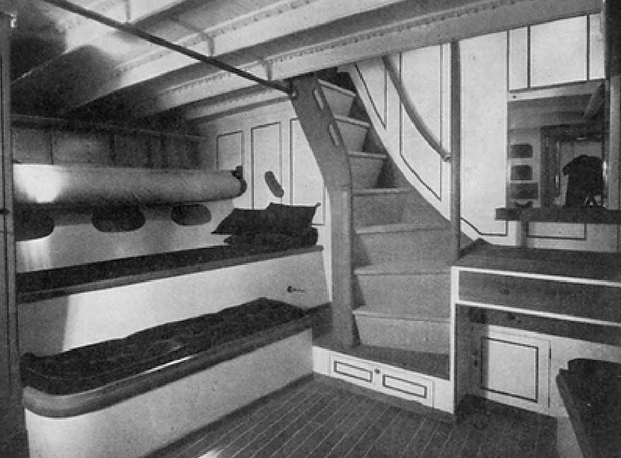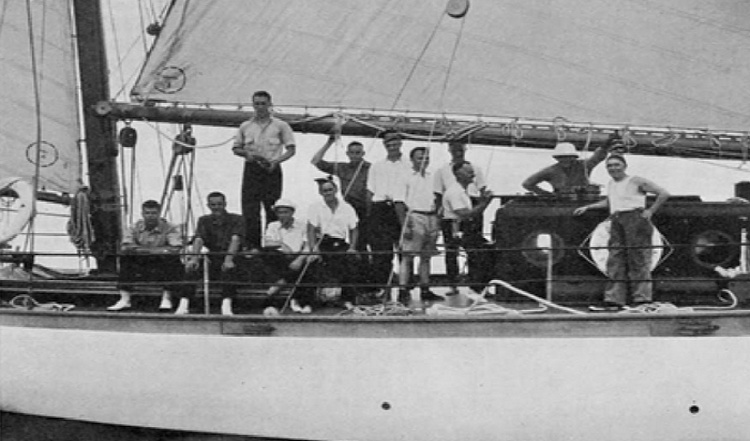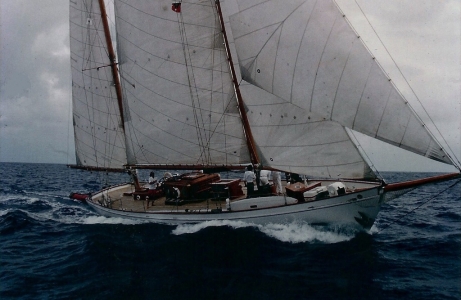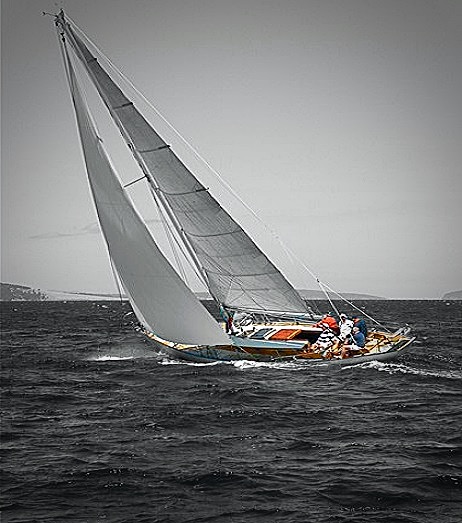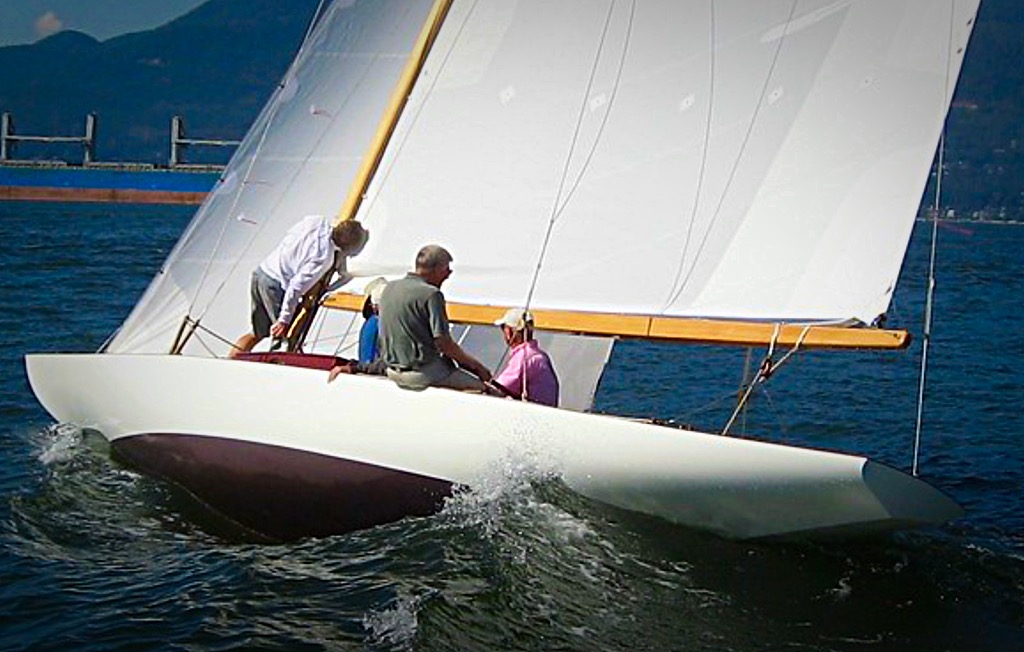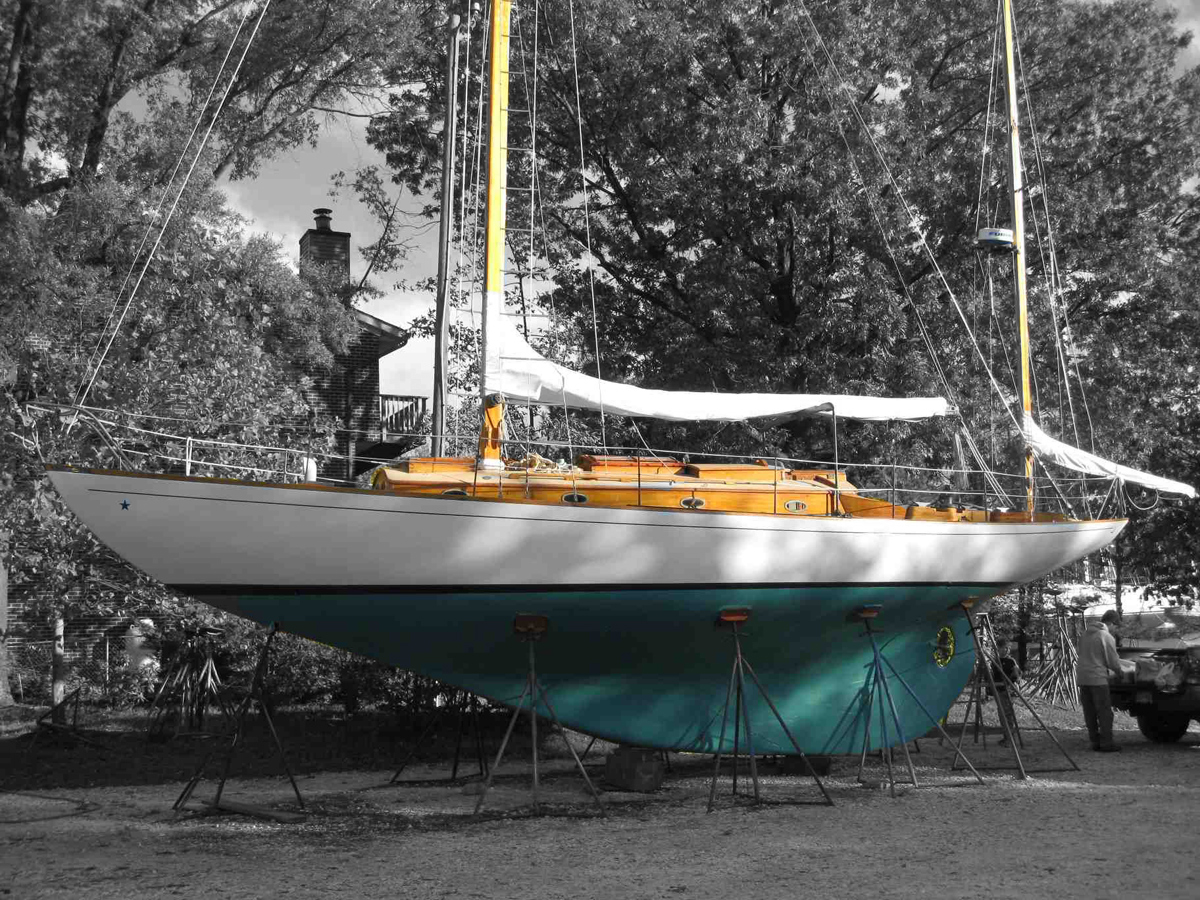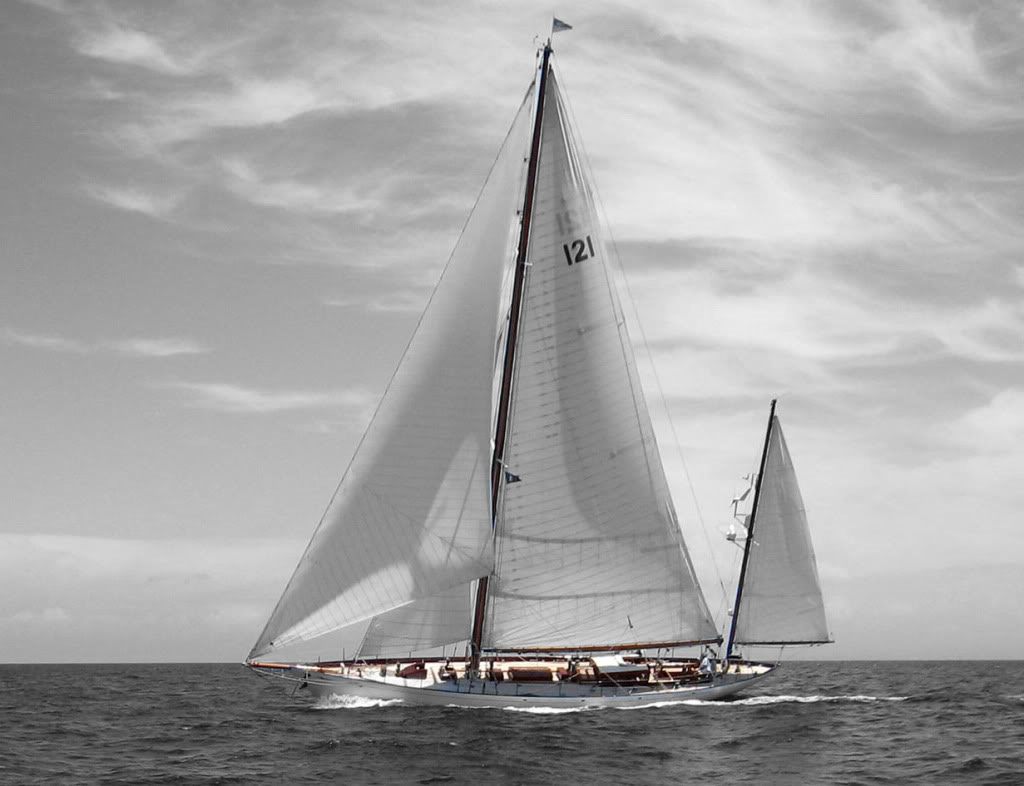
Sail Number: 121
Vessel Type: Bermuda Yawl
LOA: 70′0″ / 21.33m – LOD: 70’0″ / 21.33m – LWL: 52′6″ / 16.00m – Beam: 15′4″ / 4.67m – Draft: 10′5″ / 3.17m – Displacement: 43 tons – Sail Area: 2,195 sq ft – Yard Number: 808 – Hull material: Steel – Designer: William Fife III – Built by: William Fife & Son, Fairlie, Scotland – Year Built: 1936 – Current Name: Latifa – Original Owner: Michael Mason – Current Owner: 1976 – Mario Pirri – Location: Marine Traffic
Historical:
In 1935 William Fife III, aged 78, designed one of his most admired ocean racing yachts, Latifa. She was one of his all-time favourites and, when he died in 1944, his sisters had a gilded model made of her. To this day the model sits on top of the spire of Fairlie Parish Church. During World War II Latifa was used to search for German submarine bases in Irish waters.
Historical Correspondence: Michael Mason to William Fife 1935
- 19 August: Mason to Fife
- 22 August: Fife to Mason
- 25 August: Mason to Fife
- 5 October: Fife to Mason
“I am going to leave 8 Metre racing for a while, and I want to try an ocean racer and cruiser… My idea is a schooner, gaff rigged with ordinary topsails, built to ocean racing rules…something that would go in light weathers and could still be comfortable for cruising in heavy weather by shortening sail. I’d like to have her for ocean racing all summer and cruising in the winter – not in the Mediterranean but real long passages.”
“I should spend as much time as possible at the wheel myself and would like a good steering cockpit with as clear a view over the bow as possible.”
“For accommodation my idea would be four single cabins and a saloon where for racing two of the amateur crew could bed down. Foc’sIe accommodation for four I should think would be enough for the longest passages; I count myself as part of the working crew even if all the other passengers are passengers.”
“If she is what I hope she will be I want to sail her to windward through the Magellan Straights. I know that part pretty well – and back round the Horn in front of the wind. Also round the North Cape.”
“I would be glad to design and build a boat such as you describe and will prepare plans etc…No doubt an ocean racer would be a fairly satisfactory boat for ocean cruising but she would not be the best possible boat for this purpose. If after considering this you will let me know which purpose you consider more important I will plan accordingly.”
“Thanks for yours of the 21st which what I expected you to say.”
“I certainly want a boat built first and foremost for ocean racing, and to get the best according to the Rules. Everything else can follow suit to that… I quite see what you mean about best possible for Ocean cruising but I’d sooner have the racer who had done herself credit in races and then made a hazardous passage, than a slow comfortable ship that made her way easily and slowly over the same course… My idea in cruising will be as small a crew as possible over hard voyages. For the racing I should of course have any number of amateurs all content to live anyhow and sleep anywhere.”
“I now have pleasure in enclosing the specification, and have today posted under separate cover prints of the accommodation plan and sail plan, The LWL is now 51 feet 6″ as compared with 50 ft which I had in mind when I indicated £7,000 as the cost of such a vessel, this accounts for the price being £7,250 quoted… With regard to the sail plan, the main mast is specified with a topmast to socket into the head. I have also shown on the sail plan a longer topmast and larger mainsail, this might be considered for the Fastnet or similar races. The main mast is specified of Oregon pine, with a spruce topmast. I think Oregon is preferable for Ocean work, a Spruce mast is best for racing… Two positions are shown for the capstan. If it is fitted in the aft position it might be useful for the mainsheet. It could easily be removed for racing… The woodwork in the saloon and owner’s accommodation is specified of mahogany, cedar or timber of equal weight, in order to keep down the weight of these, and the finish is probably most suitable for your purpose, as it is not easily marked and can be cleaned with a damp cloth. This is only a suggestion for your consideration.”
“I hope the drawings will meet with your approval and will be glad to amend them in any way you desire.
I am, Yours most faithfully, William Fife.”
Known Restoration History:
2013 – Beconcini Yard, La Spezia, Italy – New stainless steel standing rigging, topsides sprayed with Awl Grip high solid clear, the covering board varnished, a black water holding tank system installed.
2000-2001 – Beconcini Yard, La Spezia, Italy – New mast step structure, chain plates and teak deck.
1976-1977 – Beconcini Yard, La Spezia, Italy – Everything was stripped of her all machinery and electrics were scrapped. Bulkheads, partitions, cabin sole and all furniture were put ashore and numbered.
Known Racing History:
2013 – The Fife Regatta – Class 1: Latifa Winner
2009 – Vele Storiche Viareggio – the Gerry Zaccagni Prize Winner – Awarded For Meticulous Maintenance with Seafaring Prowess.
1939 – Fastnet Race – 2nd place
1937 – Fastnet Race – 2nd place
Provenance (The Wall of Remembrance – The Owners, Crew & Notable Guest):
Owner: (1936) – Michael Mason
Owner: (1976) – Mario Pirri

